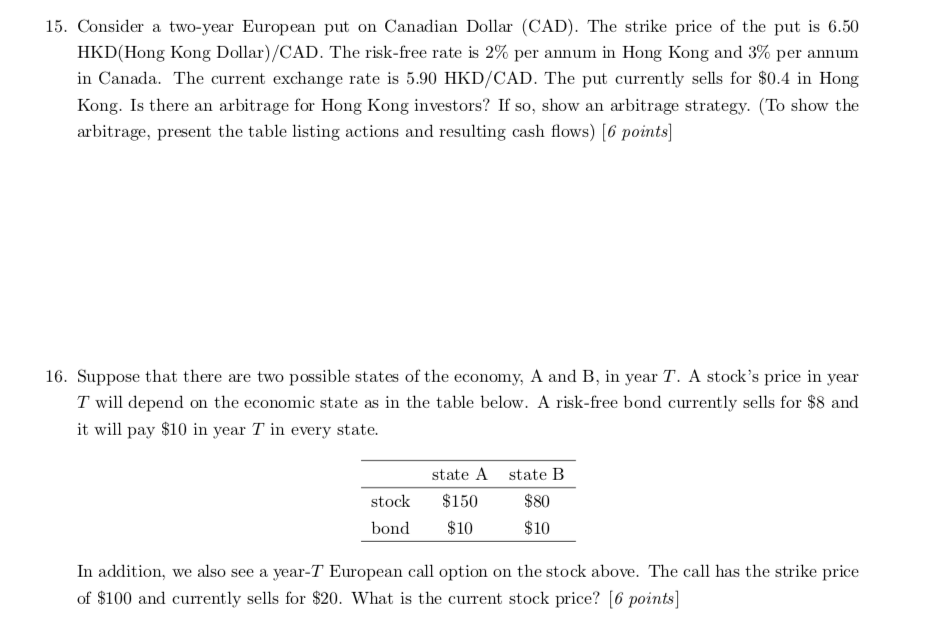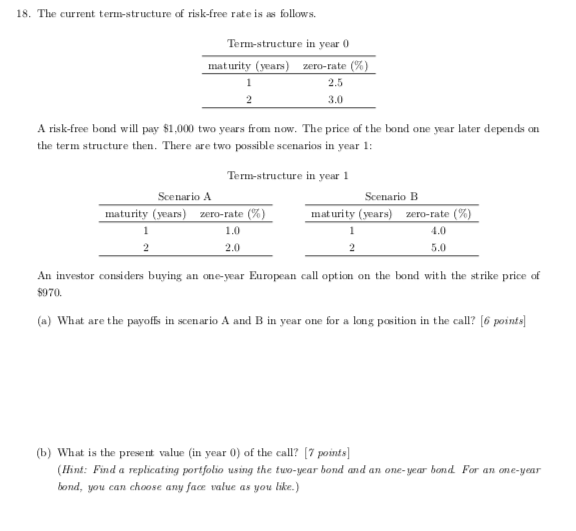


13. In time 0, an investor takes a calendar spread by selling two-year European call option and buying three-year European call option. These two options have the same strike price of $80 and are for the same stock that pays no dividends. The two-year option sells for $5 and the three-year option sells for 57. Two years later, the stock price turns out to be $90. The risk-free rate is 2% per annum. What is the minimum of the prot from this strategy? {We assume that we sell the longer-term option in year two} [5 points] 15. Consider a two-year European put on Canadian Dollar (CAD). The strike price of the put is 6.50 HKD(Hong Kong Dollar)/CAD. The risk-free rate is 2% per annum in Hong Kong and 3% per annum in Canada. The current exchange rate is 5.90 HKD/CAD. The put currently sells for $0.4 in Hong Kong. Is there an arbitrage for Hong Kong investors? If so, show an arbitrage strategy. (To show the arbitrage, present the table listing actions and resulting cash flows) [6 points] 16. Suppose that there are two possible states of the economy, A and B, in year T. A stock's price in year T will depend on the economic state as in the table below. A risk-free bond currently sells for $8 and it will pay $10 in year T in every state. state A state B stock $150 $80 bond $10 $10 In addition, we also see a year-T European call option on the stock above. The call has the strike price of $100 and currently sells for $20. What is the current stock price? [6 points]18. The current term-structure of risk-free rate is as follows. Term-structure in year 0 maturity (years) zero-rate (%) 1 2.5 3.0 A risk-free bond will pay $1,000 two years from now. The price of the bond one year later depends on the term structure then. There are two possible scenarios in year 1: Term-structure in year 1 Scenario A Scenario B maturity (years) zero-rate (%) maturity (years) zero-rate (%) 1.0 1.0 2 2.0 13 5.0 An investor considers buying an one-year European call option on the bond with the strike price of 8970. (a) What are the payoffs in scenario A and B in year one for a long position in the call? [6 points] (b) What is the present value (in year 0) of the call? [7 points] (Hint: Find a replicating portfolio using the two-year bond and an one-year band For an one-year bond, you can choose any face value as you like.)












